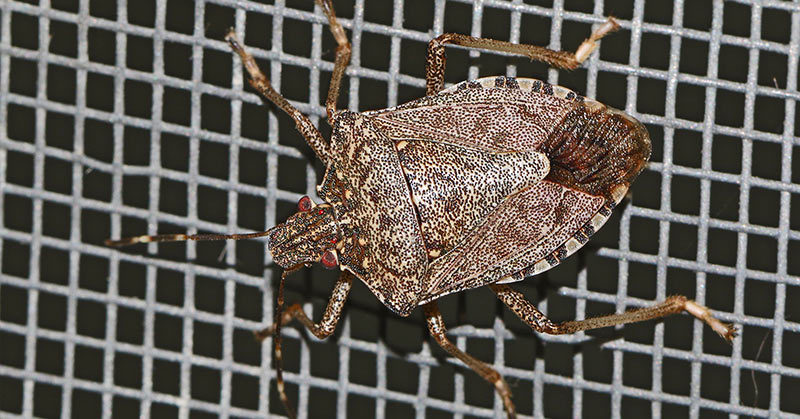Every year as the temperatures begin to drop, we start to take many of our activities indoors. Unfortunately, humans are not the only ones who prefer the warmth of central heating. Bugs, too, find their way into our homes in search of warmer conditions – including stink bugs.
This year, scientists are expecting the “great bug migration” to be even worse. Experts are expecting one bug in particular to invade our homes in “robust” numbers: the marmorated stink bug.
What Are Stink Bugs?
The brown marmorated stink bug (also known as the yellow-brown or East Asian stink bug) was introduced to the United States from Eastern Asia in the mid-1990s. Scientists found the first bug in Allentown, Pennsylvania. Today, the bugs are most prevalent in the mid-Atlanta region, but also exist in 44 states and the District of Columbia.
When you crush a stink bug it releases an unpleasant odor, hence the name. The smell can linger for hours and is meant to protect the bugs from predators. These bugs can be fairly large, and adults can reach sizes of nearly two centimeters in length.
Stink bugs are unlikely to bite, because their mouths are not capable of getting through human skin [1].
The Stink Bug Invasion
A recent study from Penn State entomologist Greg Krawczyk has reported that there will be a significantly larger population of stink bugs this fall. This means that there will also be a large number of these bugs invading our homes.
In his report, Krawczyk said that they have begun to observe high numbers of brown marmorated stink bug adults and nymphs collecting in the monitoring traps they placed around commercial orchards.
“Traps placed on or under the trees located on the border of woods as well as traps placed in the first row of orchards, which rarely collected stink bugs for most of this season, now are collecting many more (stink bug) nymphs and adults,” he said [2].
Jim Fredericks is the chief entomologist for the National Pest Management Association. He says the increase in numbers is due to warmer spring and summer temperatures, and the very mild winter. These temperatures allow the bugs to complete more than one population cycle in a year. This means more bugs in people’s homes [3].
“In regions of Pennsylvania where temperatures were especially warm from May to August, residents may encounter greater numbers of stink bugs in the fall,” he said [2].
Because they are not a native species, they do not have any natural predators in North America. For this reason, they are able to spread very rapidly and pose a particular threat to agriculture as they destroy crops [1].
Invading more states
Rachael Baihn is a writer for LawnStarter.com, a lawn care and pest control service in Pennsylvania and 100 other U.S. markets. She says stink bugs are invading more states across the country.
“This little bug has cost farmers millions in crop losses.” [2]
She also explained that the bugs prefer to move in large groups. If you see one bug in your home, you’re likely to find more.
Fredericks says that while there are different species of these bugs, only the brown marmorated stink bug tends to be a pest inside homes and other buildings. As the weather cools, they will begin to look for shelter in the cracks and crevices of homes and buildings. They’ll even creep behind siding to find shelter in wall voids.
“Often hundreds (or thousands) can congregate in the same area, seeking a warm place to spend the winter months,” he said. “On warm days during the winter, some bugs will become active and find their way indoors.” [2]
What to Do About Them
The best way to deal with these bugs in your home is to prevent them altogether. To stop them from entering your house, seal the cracks and crevices that could provide shelter for the bugs. Fredericks suggests enlisting the help of a pest control professional.
You also want to avoid picking them up or crushing them, since that will cause them to emit their stench. That smell contains pheromones that attract more of these bugs, making the problem even worse. Instead, if you see them in your home, try sucking them up with a vacuum cleaner.
While they do cause problems for farmers, Krawczyk emphasised that people have nothing to fear.
“They still do not cause any harm. They still do not bite. They still do not spread any disease or anything like this. They’re a nuisance,” he said [3].
Keep Reading: Birds Mysteriously Dropping Dead Across Southwestern U.S.

